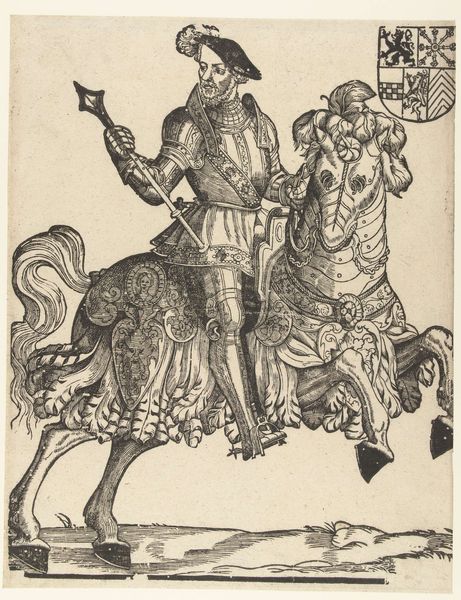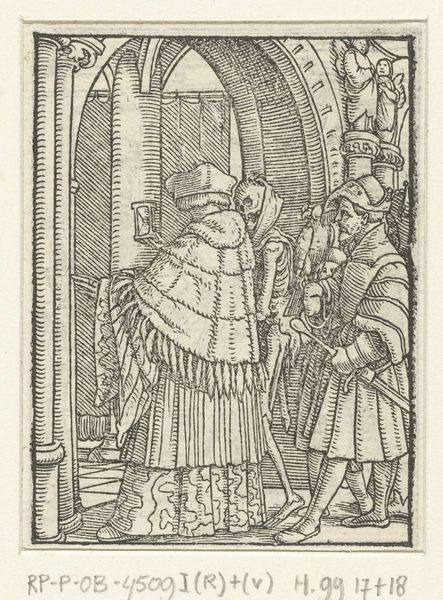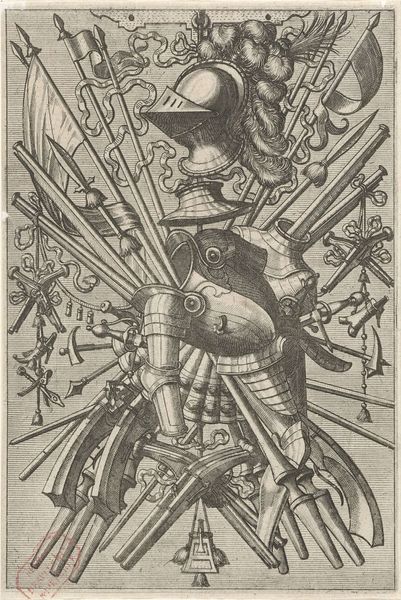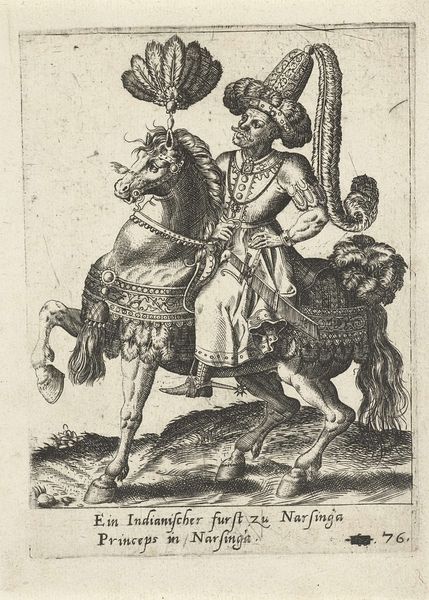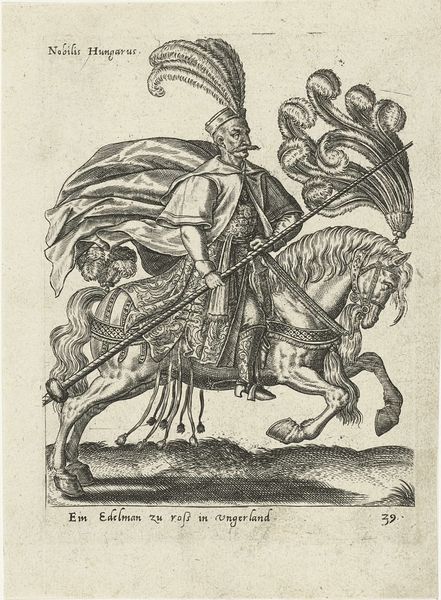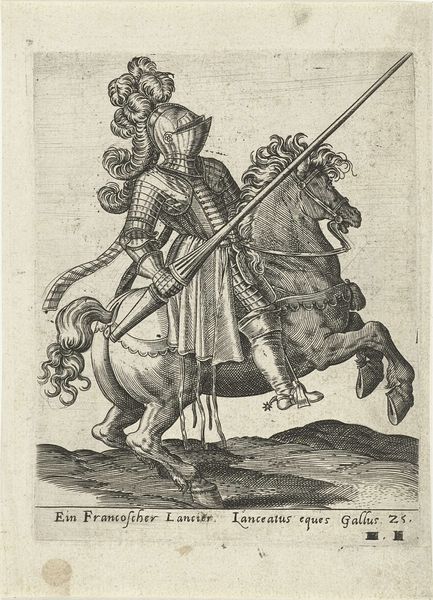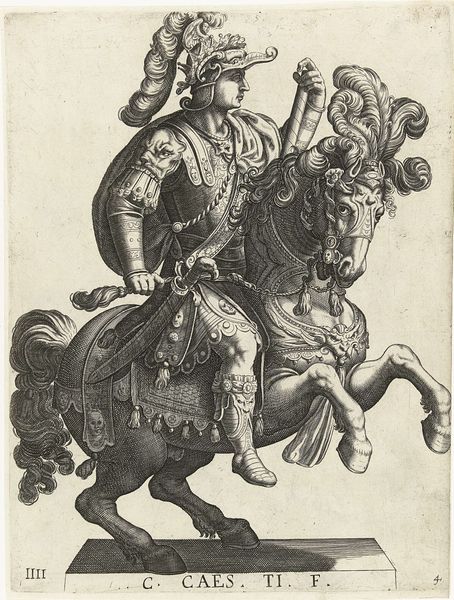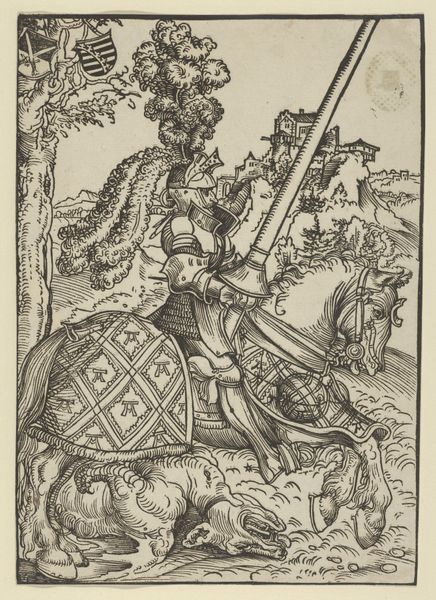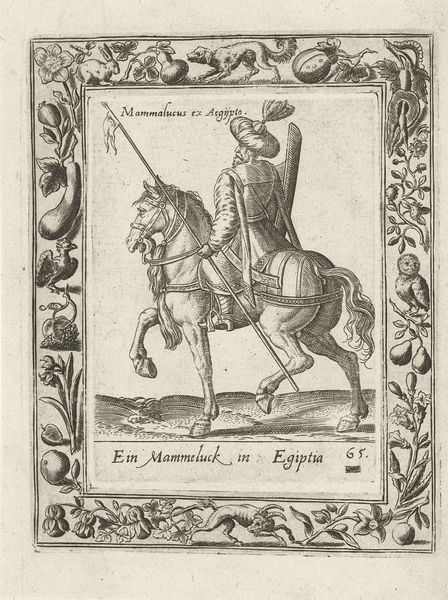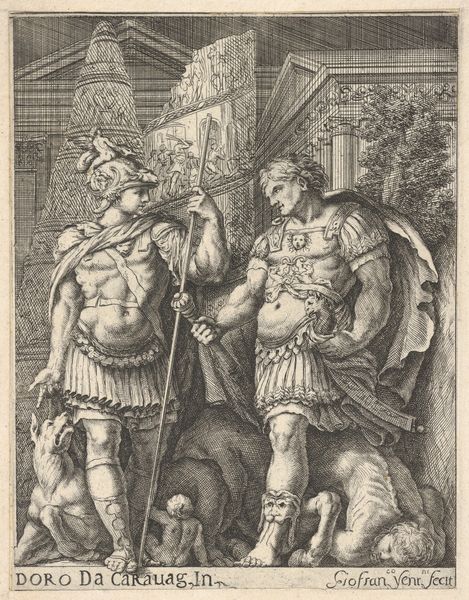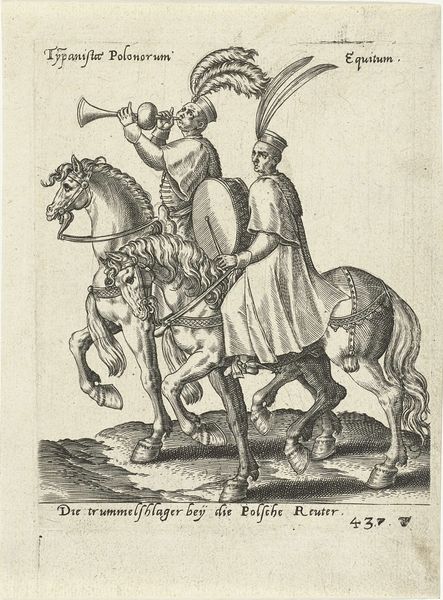
Dimensions: height 325 mm, width 229 mm
Copyright: Rijks Museum: Open Domain
Curator: Looking at this print, dated 1518, we see Hans Burgkmair’s "Equestrian Portrait of Emperor Maximilian." Editor: It's striking how stiff and formal it feels. The elaborate ornamentation and detailed armour create an immediate sense of distance, almost an impenetrable barrier around the subject. Curator: Indeed. Consider the political climate of the early 16th century, and the Holy Roman Empire. Burgkmair created this woodcut as part of a larger series commissioned by Maximilian himself to cultivate his image as a powerful ruler, a defender of Christendom. This print isn't just a likeness; it's propaganda, meant to project authority. Editor: The visual language is very consistent with that intent. The horse, although strong, seems secondary to the imposing figure of the Emperor. What can we infer about the symbols included? The double-headed eagle, the coats of arms... they seem central. Curator: Absolutely. Those are deliberate visual cues connecting Maximilian to imperial power, lineage, and divine right. The image reinforces his claim to the throne. Think of the power dynamics inherent in representation itself—who has the means to commission art and control the narrative? And whose stories are omitted from that narrative? Editor: And the way that Maximilian is facing is so specific! Profile view can feel static, almost like a coin. It isn’t particularly intimate, but in line with the desired feeling of the engraving. The symbolic order of the objects overshadows anything we can interpret emotionally. It’s so...considered. Curator: I see your point. This wasn't meant to be a psychological portrait, but rather an emblem. In my mind, there are questions around whose identities are historically valued enough to preserve? Why certain visual markers were so crucial to reinforcing power and what it communicates to the viewers then and now. Editor: Ultimately, the power of these symbols transcends time. Even now, seeing the eagle and the carefully rendered armor elicits feelings about history. Curator: Precisely, this work shows us how artistic patronage shapes identity, even centuries later, reminding us that art is never truly neutral. Editor: I agree completely, and the ways those symbols are used reveals something profound about the continuous project of identity creation.
Comments
No comments
Be the first to comment and join the conversation on the ultimate creative platform.
